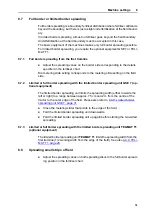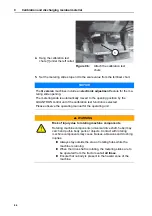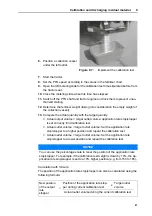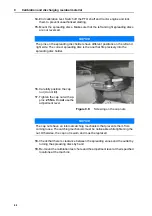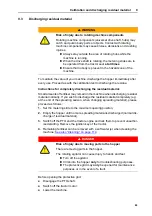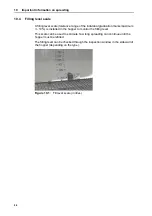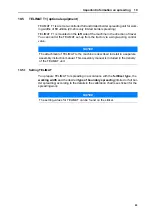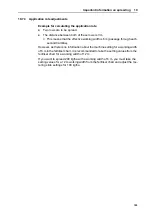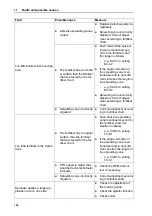
Important information on spreading
10
92
10.2
General information
The modern technology and design of our machines, and exhaustive, continuous
testing in the factory's fertiliser spreader test facilities are the prerequisites for a
perfect spreading pattern.
Despite the fact that we have manufactured the machine with utmost diligence,
deviations in the application rate or possible faults cannot be excluded, even
when complying with the intended use.
The reasons for this may be:
Changes in the physical characteristics of the spreading material (e.g. devi-
ating grain size distribution, varying density, grain form and surface, treat-
ment, sealing, humidity).
Clumping and moist fertiliser.
Drifting caused by wind (in the case of excessive wind speed, cancel the
spreading work).
Clogging or bridging can occur (e.g. due to foreign bodies, bag residue or
moist fertiliser etc.).
Uneven ground.
Wearing down of wearing parts (e.g. agitator finger, spreading vane, outlet).
Damage from external causes.
Inadequate cleaning and care to prevent corrosion.
Incorrect drive speeds and forward speeds.
Calibration test has not been carried out.
Incorrect machine adjustments.
Make sure that the machine is correctly set. Even a minor deviation from the cor-
rect setting may lead to a significant impairment of the spread pattern. Therefore,
before each operation and during operation, check the correct functioning of your
machine and ensure that the application accuracy is sufficient (run calibration).
Particularly hard types of fertiliser (e.g. Thomas fertiliser, kieserite) increase wear
to the spreading vanes.
The spreading width at the rear is approx. one half of the working width. The over-
all spreading width corresponds to approx. 2 working widths for a triangular
spreading pattern (M1 spreading disc:
10-18 m depending on the type of fertiliser).
Always use the protective grid included in delivery to avoid clogging e.g. due to
foreign particles or clumping fertiliser.
Claims for damages other than for damage to the machine itself will not be ac-
cepted.
This also means that no liability will be accepted for damage resulting from
spreading errors.
Summary of Contents for MDS 14.2
Page 8: ...Intended use 1 2...
Page 28: ...Safety 3 22...
Page 38: ...Technical data 4 32...
Page 42: ...Axle load calculation 5 36...
Page 44: ...Transportation without tractor 6 38...
Page 86: ...Machine settings 8 80...
Page 96: ...Calibration and discharging residual material 9 90...
Page 110: ...Important information on spreading 10 104...
Page 114: ...Faults and possible causes 11 108...
Page 146: ......


